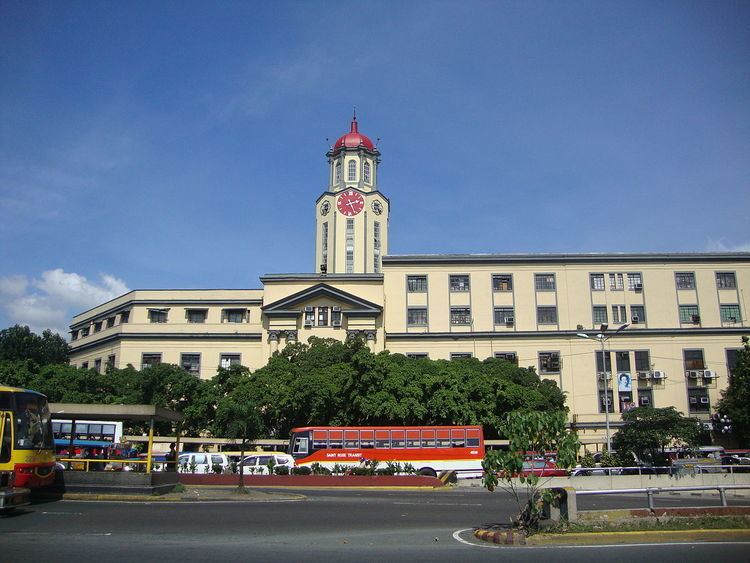Status Complete Completed August 19, 1941 Phone +63 2 527 0972 | Type Government building Opening 1941 Opened 19 August 1941 Architectural style Neoclassical architecture Architect Antonio Manalac Toledo | |
 | ||
Location Corners of Taft Avenue, Padre Burgos Avenue and Villegas Street, Ermita, Manila, Philippines Address Padre Burgos Ave, Ermita, Manila, Metro Manila, Philippines Hours Open today · 8AM–5PMMonday8AM–5PMTuesday8AM–5PMWednesday8AM–5PMThursday8AM–5PMFriday8AM–5PMSaturdayClosedSundayClosed Similar National Museum of the Philippines, Central Terminal LRT station, Quiapo Church | ||
Manila city hall scale model
The Manila City Hall (Filipino: Gusaling Panlungsod ng Maynila) is located in the historic center of Ermita, Manila. It is where the Mayor of Manila holds office and the chambers of the Manila City Council. It was originally intended to be a part of a national government center envisioned by Daniel Burnham in the 1930s. Although the dream plan was not fully implemented, some buildings for the proposed government center was constructed, including the Old Legislative Building (now the National Museum of Fine Arts), and the Agriculture and Finance Buildings (presently the National Museum of Anthropology and National Museum of Natural History).
Contents
Architecture
The Manila City Hall during 1901 was made up of Oregon-pine which covered one third of the area used by the current building. After 31 years of occupancy, City Engineer Santiago Artiaga suggested to reinforce the floor of the weakened structure supporting the session hall used by the municipal board and avoid the accommodation of too many people along the corridors and in the hallway. Eventually the old City Hall was then demolished
In the 1930s, a new 8,422 square meter-City Hall was constructed, which included around 200 rooms and uniform windows on all sides. This was designed by Antonio Toledo, the same architect who built the Finance and Old Legislative Buildings which were both adjacent to the new City Hall. Finished in 1941 right before World War II, it was another of the structural casualties of the War, heavily damaged (but still intact) by bombardment during the Battle and subsequent Liberation of Manila in February 1945. With the aid of the United States Army, Philippine Commonwealth Army and the city government, City Hall was reconstructed, though did not follow the original plans. Among the deviations were an added fifth-floor attic from the south entrance until the location of the east-west side entrances to accommodate additional offices, and additional windows in some areas which were formerly shelling damages.
The building sits on a trapezoidal shape of the lot in between the Legislative and Post Office buildings. Due to the monotony of the building envelope, one cannot distinguish the principal facade from the main entrance properly. The south entrance has a balcony emphasized by three arches resting on Corinthian columns while the north rear has the same design treatment with the east and west sides, but has pediments all throughout and a tall, hexagonal clock tower capped by a dome.
Successive administrations have left their mark on the building, which in recent years have further devaluated the building's pre- and immediate post-War beauty and glory. Among such marks include:
Clock Tower
The clock tower, also designed by Antonio Toledo which was completed during the 1930s is the largest clock tower in the Philippines. It stands out during nighttime when the whole of the tower lights up. Every hour, they rung the bell three times continued by a melody. It has now become the icon for the city of Manila.
Architectural Reviews
In its prime, the Manila City Hall faced criticism for its uniform design, limited entry points, and the positioning of its clock tower. However, with the passage of time, the architectural intentions behind the building have garnered appreciation from former critics. While some observers might liken its appearance to a casket from an aerial view, it was purposefully designed to resemble the shield of the Knights Templar. This symbolizes the Philippines' affiliation and safeguarding by the Roman Catholic Church.
